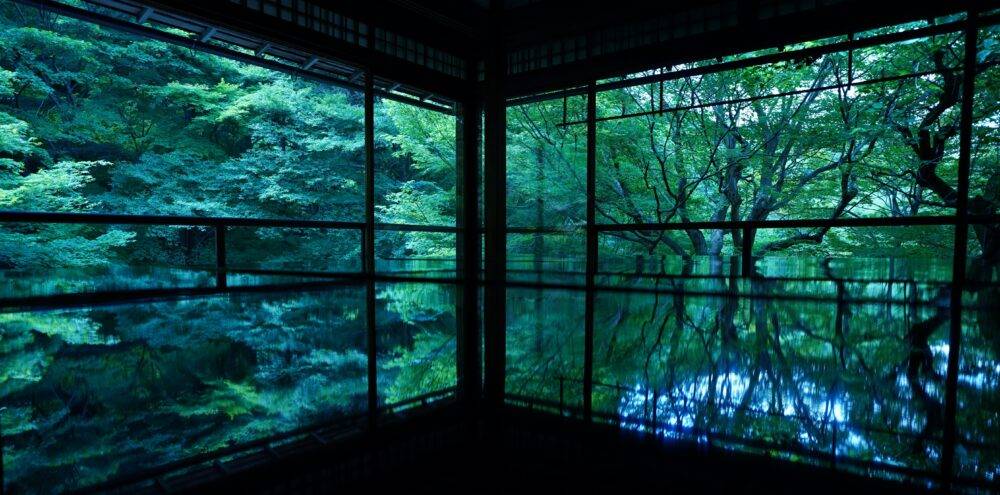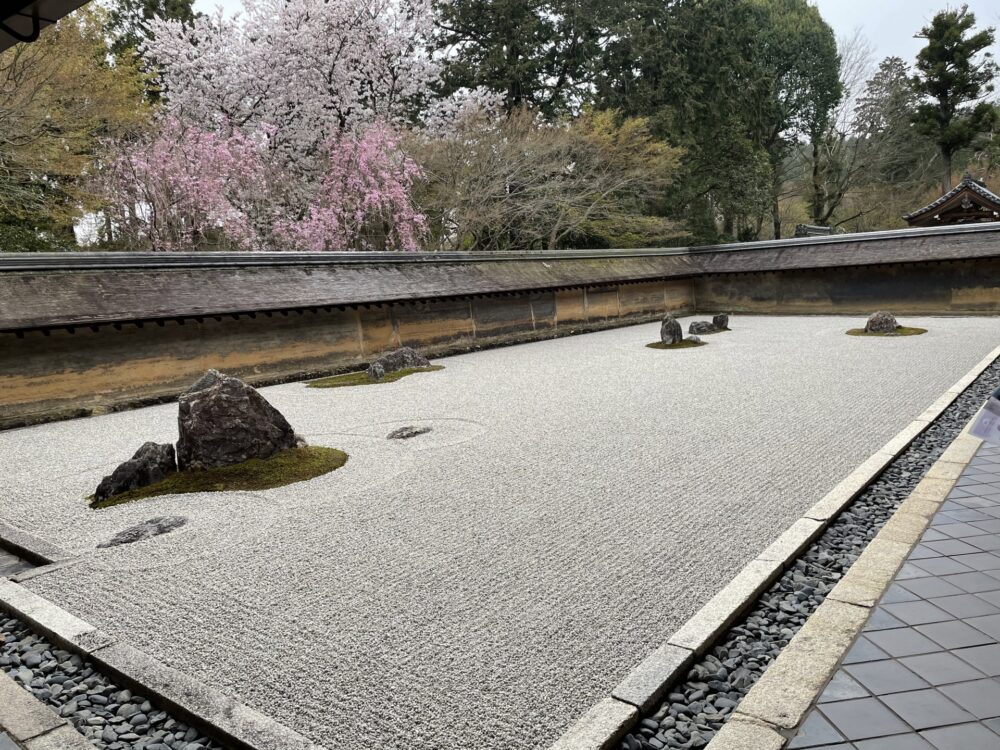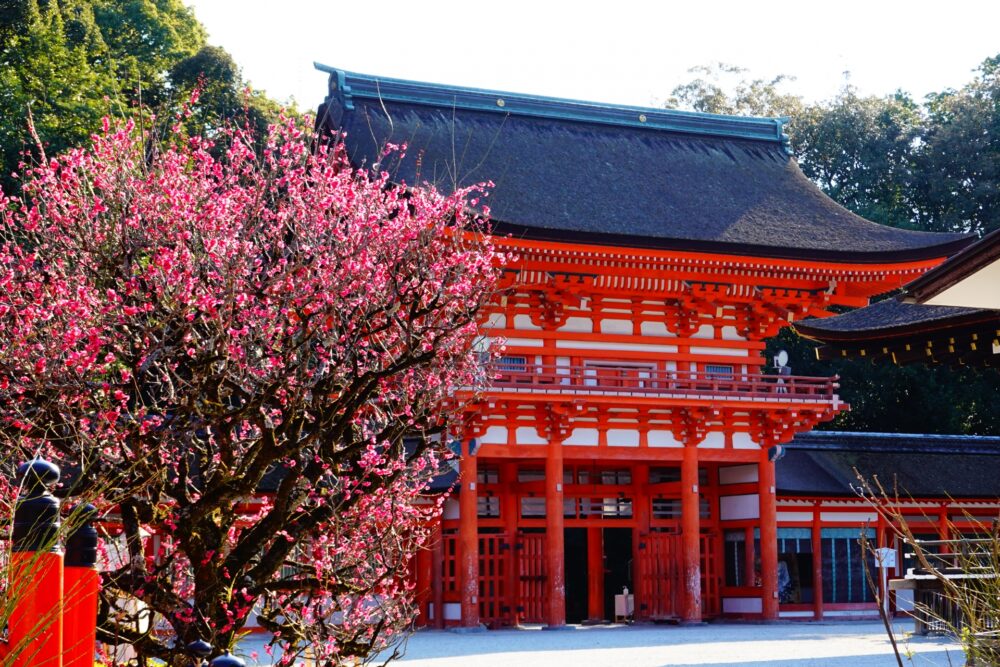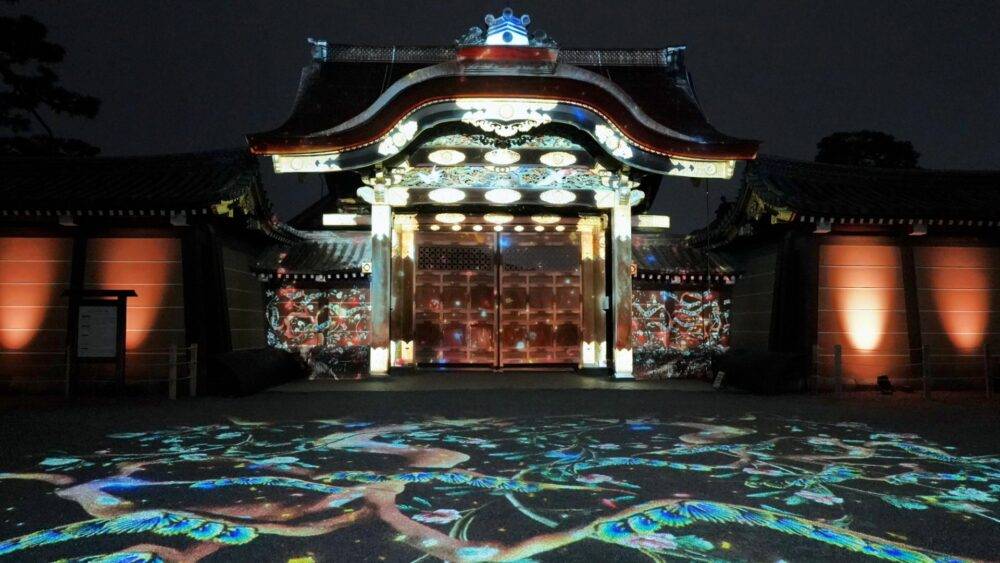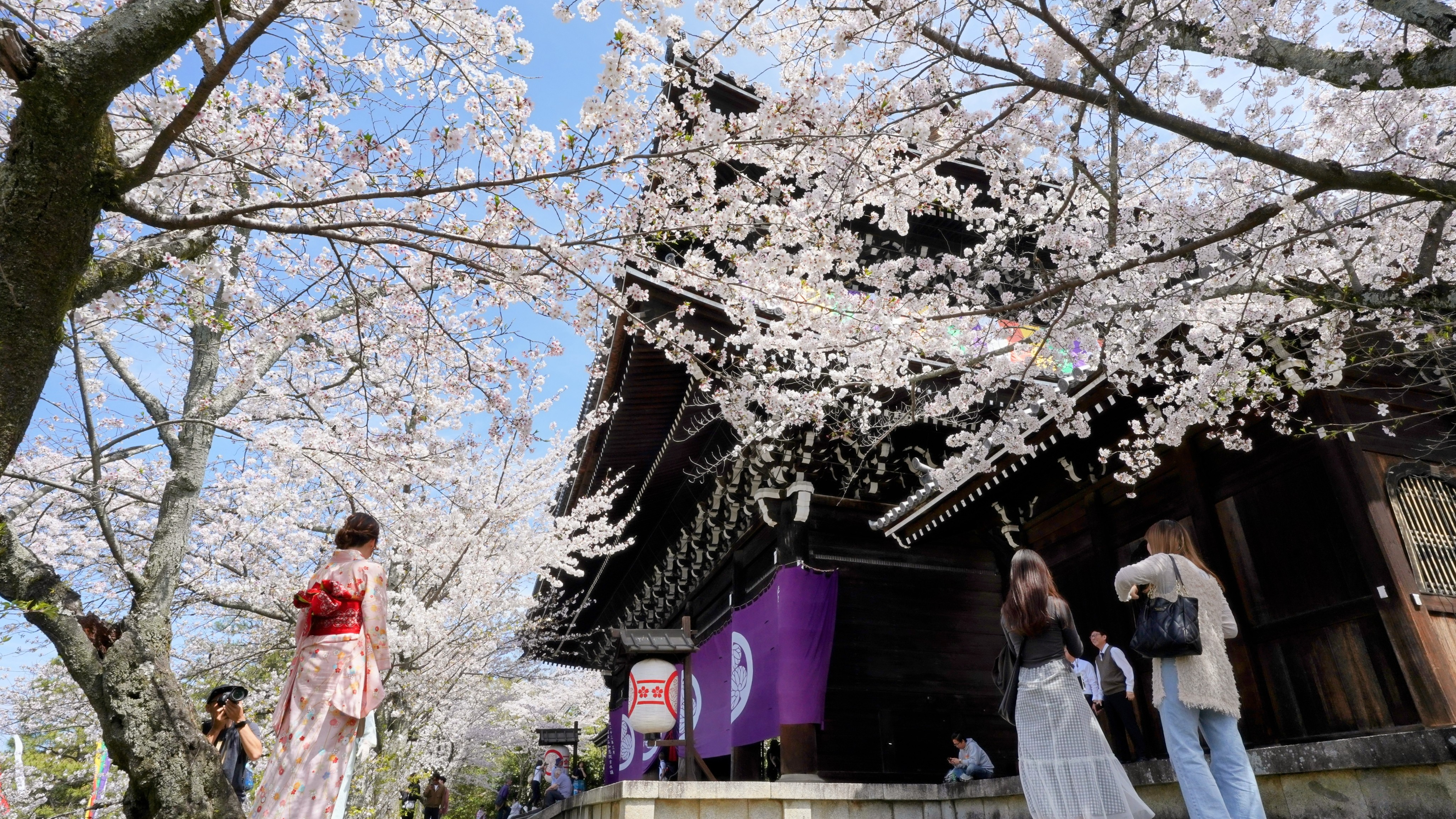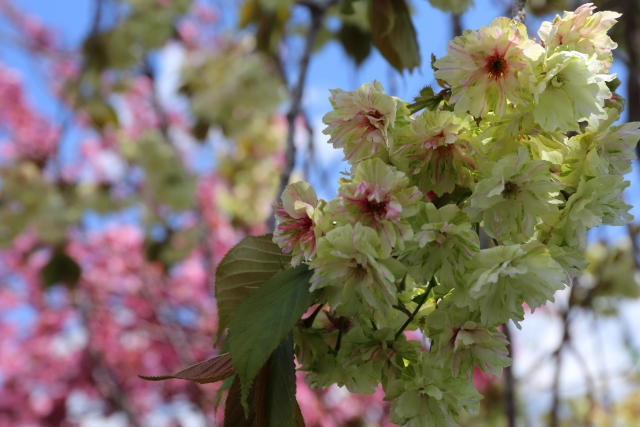Discover the Magic of Late-Blooming Cherry Blossoms in Kyoto’s Ninnaji Temple in 2023
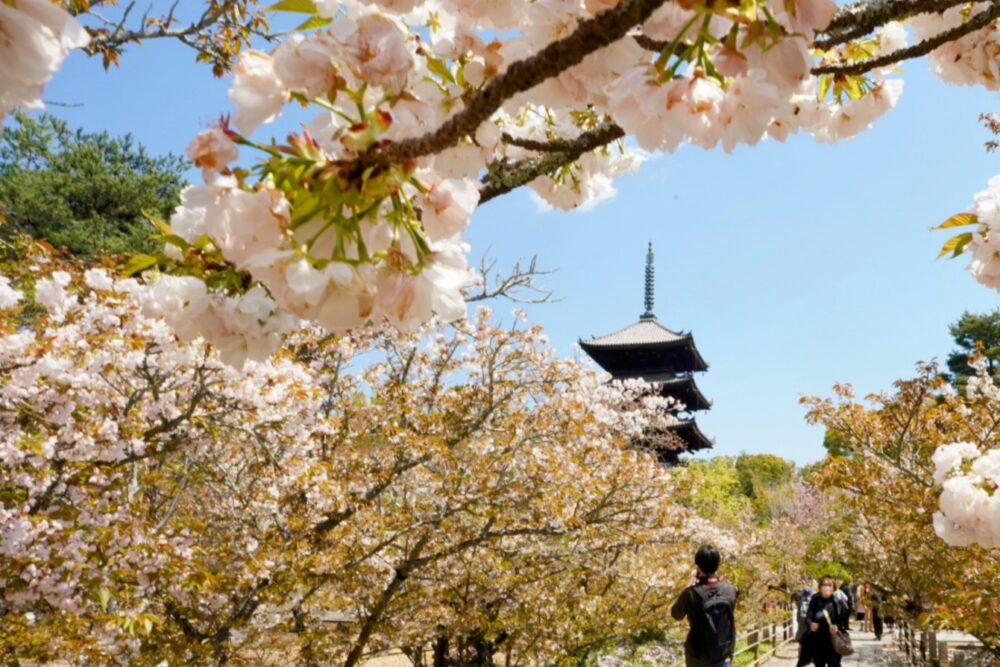
Kyoto is one of the most popular places in Japan to see cherry blossoms. The Kyoto city has many parks, temples and shrines that there are cherry trees, making it a great place to enjoy the beauty of there pink and white flowers during the early spring.
Although the cherry blossom season in Kyoto typically occurs in late march to early April, cherry trees tend to bloom earlier than usual , due to a warming climate. As per the official forecast of the Japan Meteorological corporation for 2023, cherry blossom in Kyoto bloomed on March 17. This is the second-earliest date on record since 1953.
Even if you miss the peak cherry blossom season, you can still enjoy late blooming cherry blossom viewing in Kyoto city. The most famous one is Ninnaji temple. Here is information about the history, types of flowers and how to get to temple.
>> Book a room at a hotel or an inn
>>Find tours, activities, and more
What is a Ninnaji Temple
Ninnaji Temple is one of the major buddhist temples of the Shingon sect. It was founded by in the year 888 : it has burned down many times in Its long history and was rebuilt each time.
The temple was declared by the UNESCO World Heritage Site in 1994 as an important cultural asset.
The buildings in Ninnaji temple:
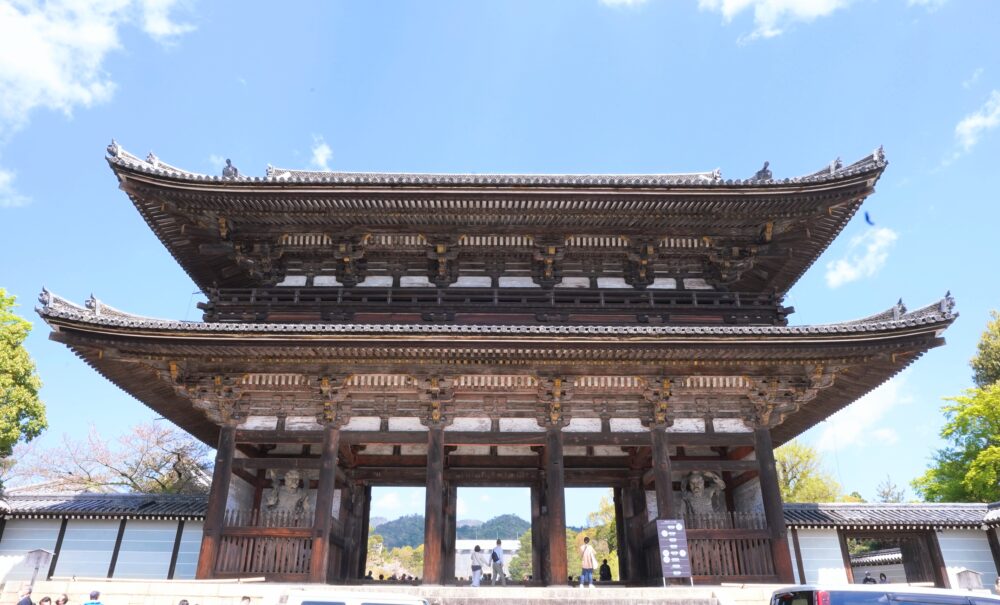
Nio-mon is a large wooden temple gate, located in southern part of the temple, constructed in 1637.
Two wrathful and muscular guardians of Buddha statues are on both sides of the pillars. On the other side through the gate, there are other guardians of shinto statues that are lion-dogs.
This unique building was built with the syncretism of Buddhism and Shinto that were the only organized religions in Japan
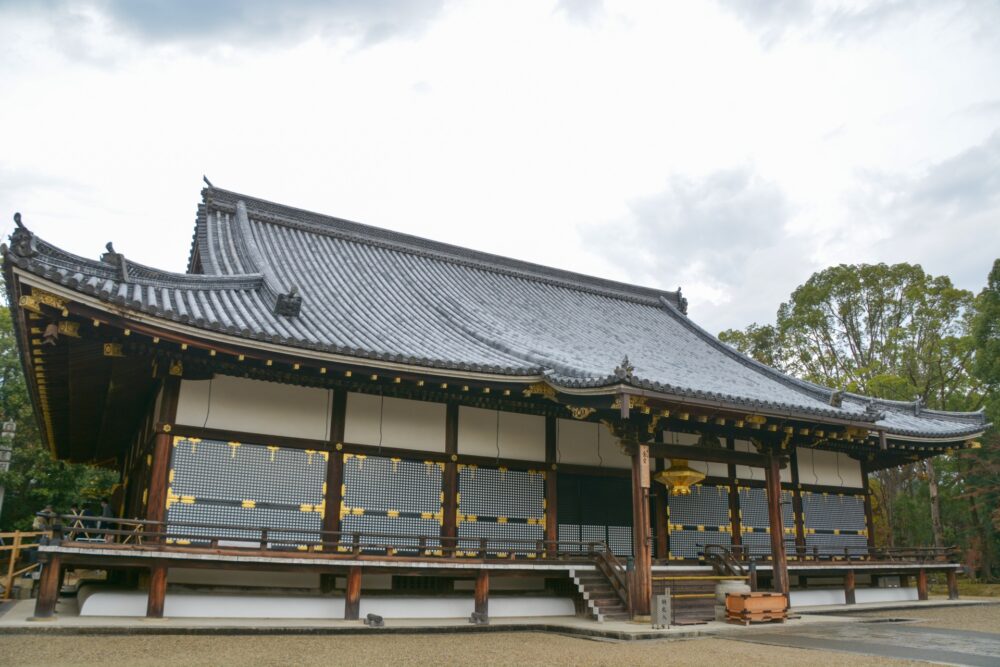
・Kon-do(golden hall) is the main hall of Ninnaji Temple, located on the north side of temple.
This authentic hall reproduces a 16th century building , used as the stage for ceremonies of the emperor. The room wαs adorned with an ornate carving and a gold leaf, giving it a luxurious appearance.
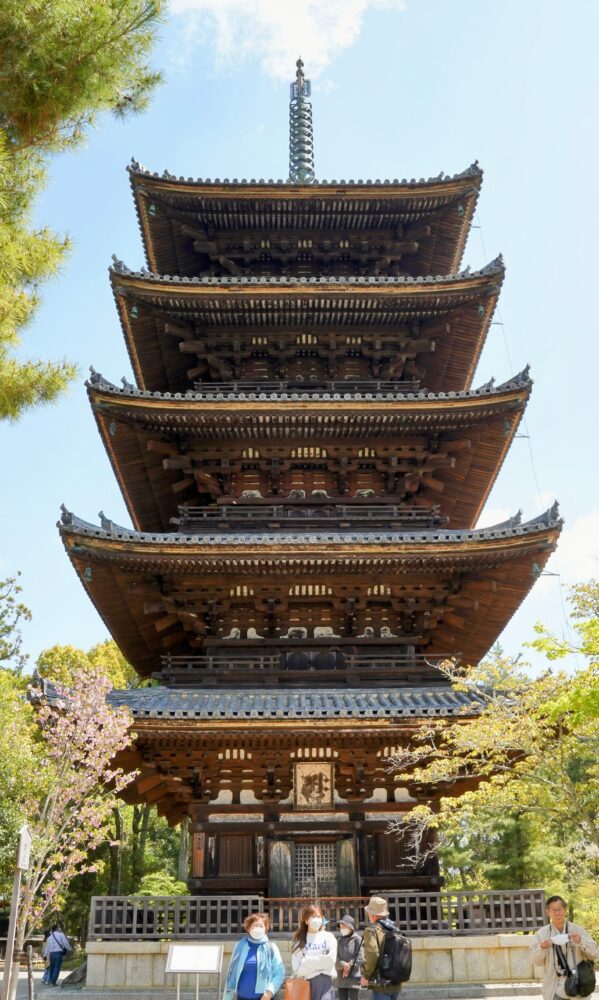
・Five-story pagoda (Gojuno-to) is wooden structure, which is 118.7 ft(36.18 m)high, built in 1644. On the first floor of the Pagoda, there is a picture, representing Dainich Nyorai that is the chief deity in Shingon buddhism.
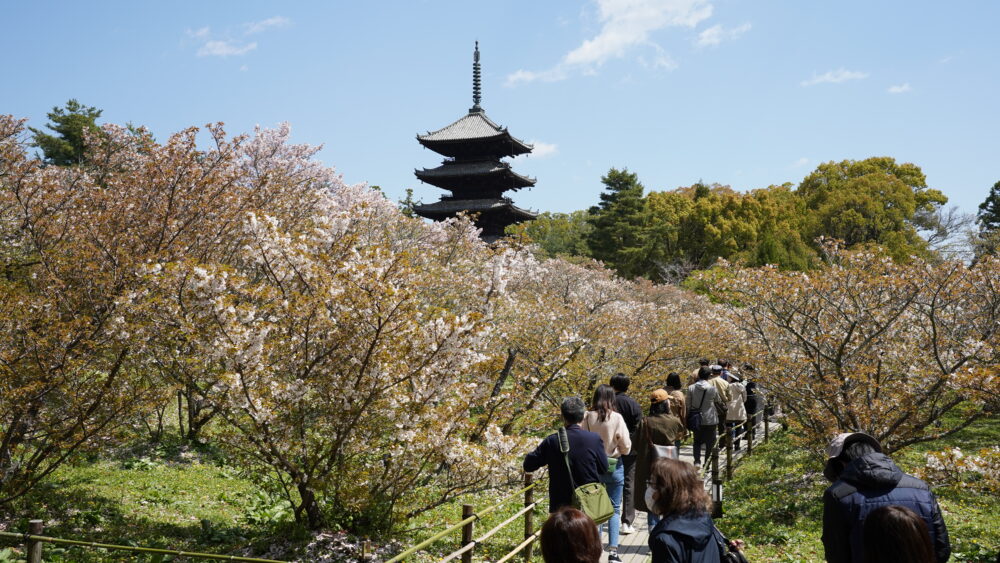
・Cherry trees area in Ninnaji temple is famous as Late-blooming cherry blossom viewing spot, located in the center of the temple precincts. There are about 200 cherry trees on the left side of the footpath.
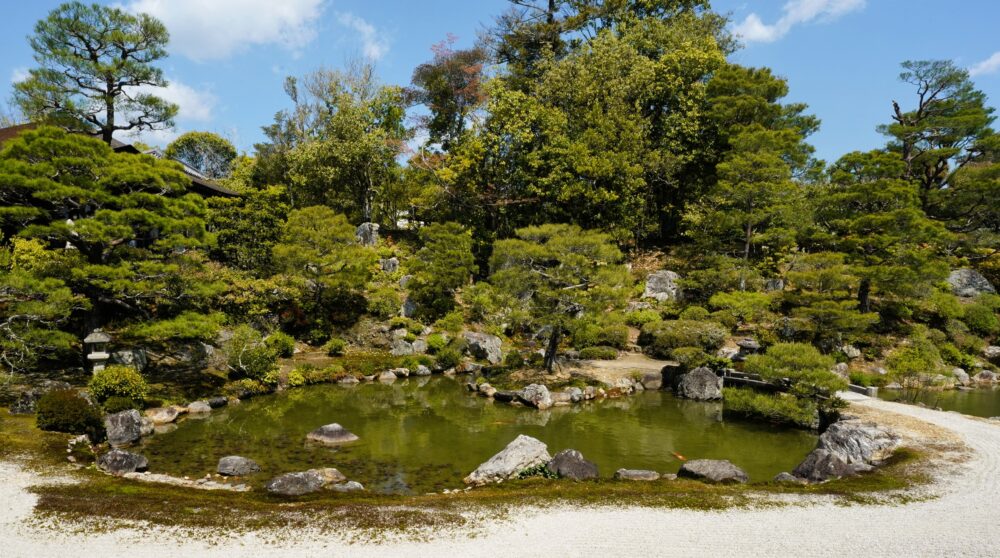
・Ninnaji temple has two traditional gardens, located in south east area : South garden which is Japanese dry garden with cherry tree and North garden which is Ornamental pond garden.
・The Reiho-kan museum is located in eastern are. The musesum collection includes a wide variety of objects, such as Buddhist statues, paintings, calligraphy, and ritual implements, many of which are designated as Important Cultural Properties by the Japanese government.
Types of Cherry blossom and other spring flowers

There are about 200 cherry blossoms”Omuro Zakura” that bloom in early to mid-April, after the most popular cherry blossom ”Someiyoshino” have fallen. The Omuro Zakura is small tree, about 9.8 ft(3m)high, produces pinkish white 10 to 19 petals. The reason why Omuro Zakura cherry trees are shorter than other cherry trees is that the soil is clayey, which make it difficult for their roots to grow. Visitors enjoy those short cherry blossoms at eye-level. The sight of the 5-storied pagoda and cherry blossoms is also wonderful.
There are many types of cherry trees on both sides of the main walkway through a temple gate.
“Somei-Yoshino“ cherry trees, which most familiar cherry blossom in Kyoto. All Somei-Yoshino trees produce pale pink 5-petals flowers at the same time, because of identical gene, propagated by grafting onto other stick.
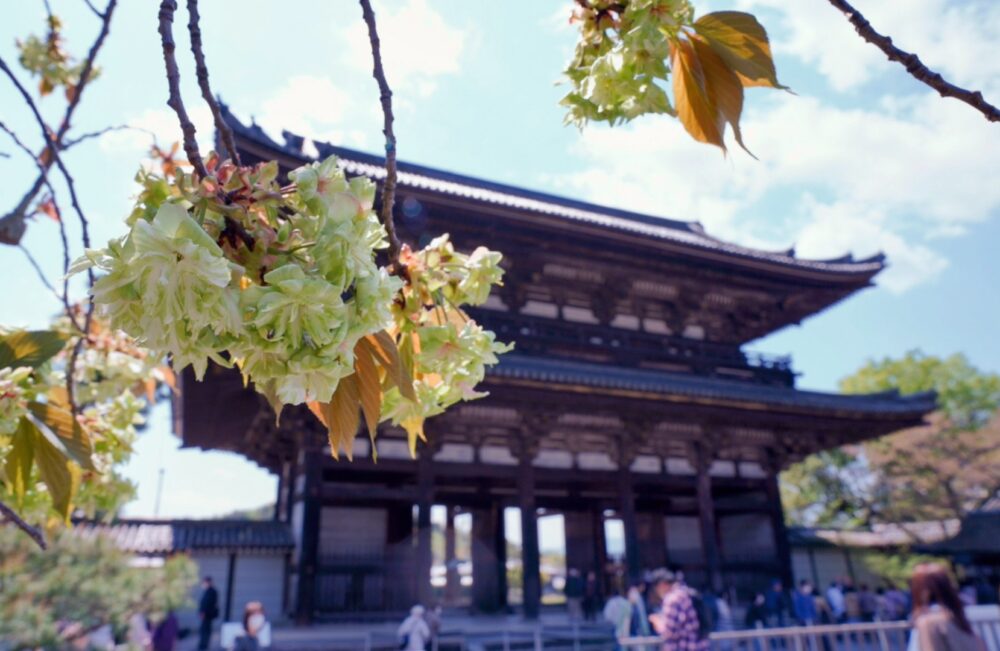
“Gyoiko” is late blooming cherry blossom (picture) , blooming in early to mid-April. This tree produces creamy white and green flowers, accentuated by red color in the center. “Gyoi-ko” is a clothing color of Japanese emperors and nobles. The scenery with green cream flowers and a brown temple gate is very beautiful.
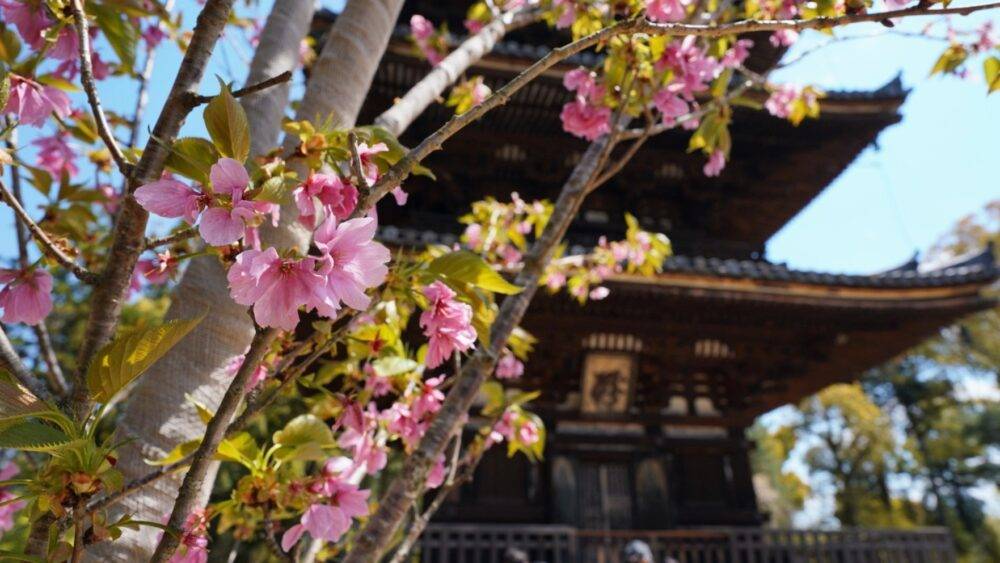
“Yaeshidare Zakura” is a weeping cherry blossom. The ruby pink more 20 petals bloom from sagging branches in early-April. This tree is hybrid of “Edohigan” usually produce flowers first and leaves later.
The picture is the elegant cherry blossom with 5-stray pagoda.
If you want to check the best time to see cherry blossoms in Ninnaji temple, my twitter, sharing information on seasonal blooms, will help you.
Other spring flowers in Ninnaji temple:
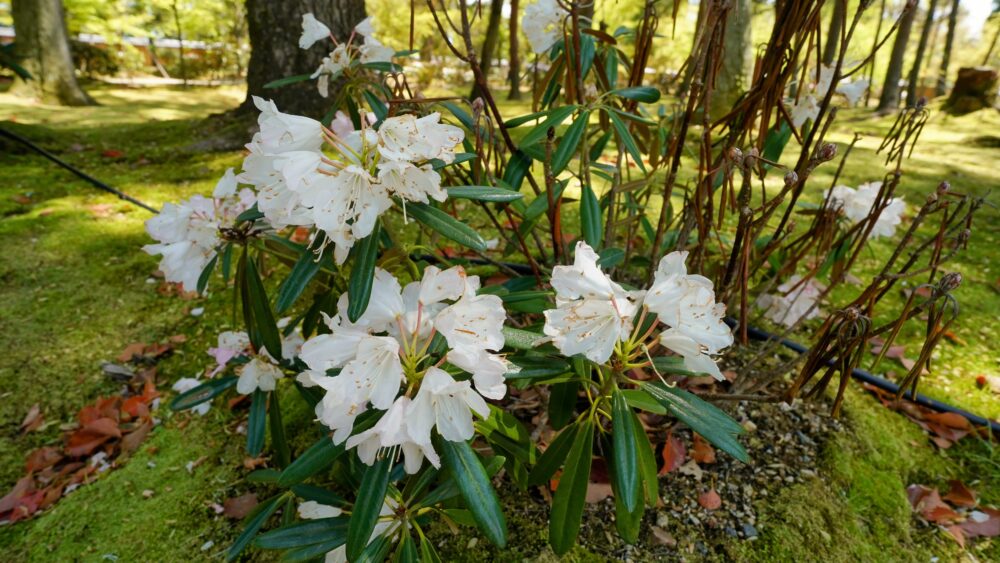
“Rhododendron” is very popular spring flower in Japan. There are many kinds of Rhododendrons which are usually tubular to funnel-shaped and occur in a wide range of colors—white, yellow, pink, scarlet, and purple.
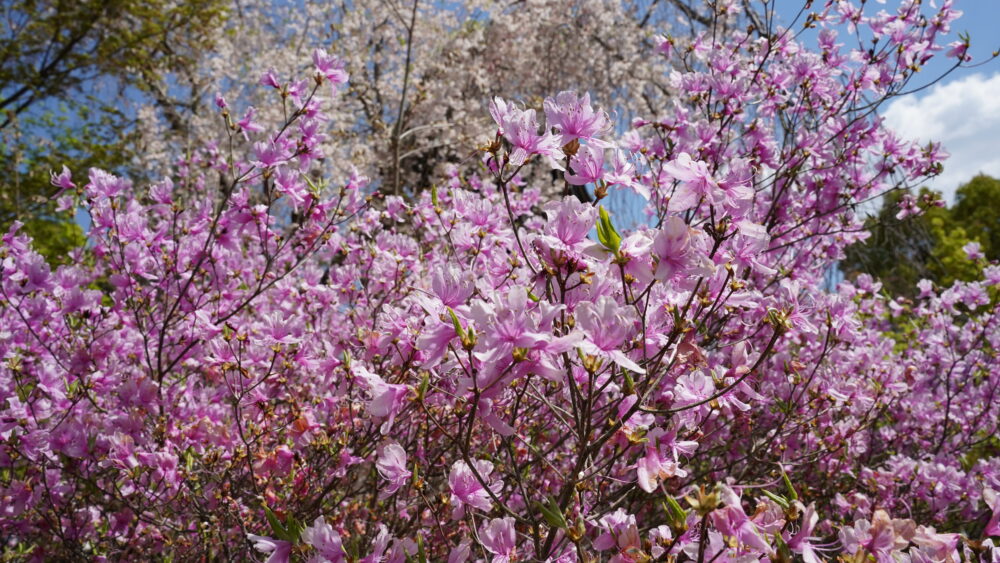
“Rhododendron dilatatum” is early flowering azalea which is a deciduous broad-leaved shrub. In early to mid-April, Those shrubs produce reddish purple flowers and three leaves on each branch.
How to avoid crowds
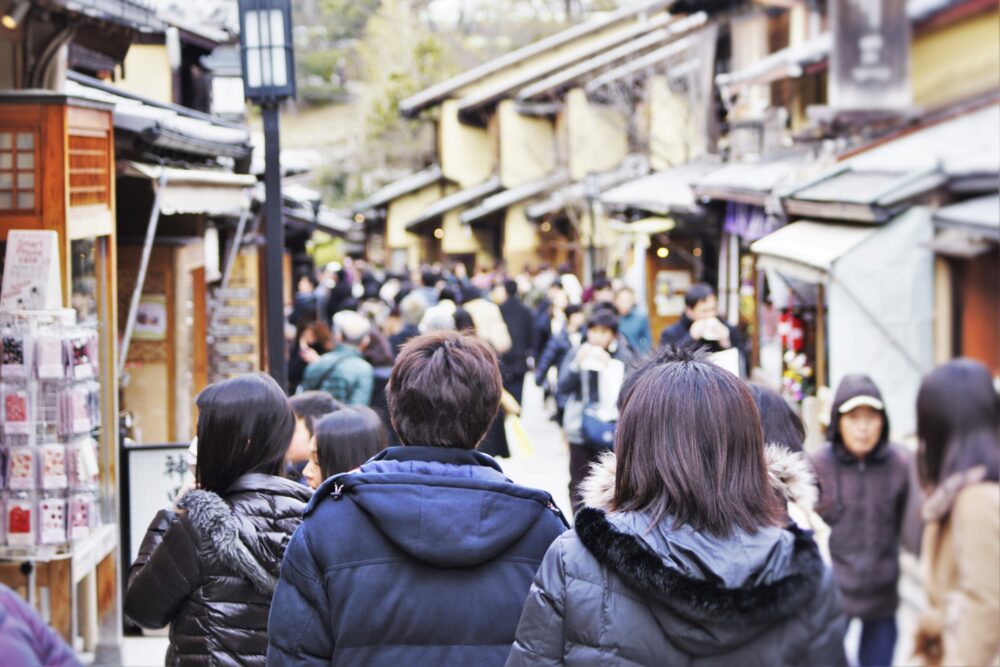
There are many hot spots in the western Kyoto city area: Ninnaji temple, Kinkakuji temple(Golden pagoda), Ryoanji temple and Kitano Tenmangu shrine.
In the high season when it’s in early spring and late fall.
It’s very crowded with many tourists to see the beautiful sceneries. Roads in Kyoto city are filled with cars and buses it takes longer to get to your destination. Here are some tips to make traveling easier.
Visit during weekdays:
Most tourists who live in Japan tend to visit on holidays. For a relaxing time, it’s better to consider visiting during weekdays.
Hours and days of the week with few visitors
on weekdays:
Most tourists who live in Japan tend to visit on holidays. For a relaxing time, it’s better to consider visiting during weekdays.
In the morning
If possible, it’s good to visit Ninnaji temple until 10 am
Effective transportations:
By train:
It’s 6 minute walk away from nearest station: Randen line Omuro-Ninnaji station to Ninnaji temple
Or JR Hanazono station is fewer transfers If you are going from JR Kyoto station.
By bicycle:
Around the Ninnnaji area where is northern east of Kyoto city, there are lots of hot spots for sightseeing. Cycling is quicker than using buses and trains to visit nearby spots. Moreover, Kyoto city is mostly float with well-maintained roads. Therefore, there are many rental bicycle stores in Kyoto.
Stay at a hotel or inn near the Ninnaji temple:
Another popular choice is to stay at a hotel or inn near Ninnaji temple, eastern Kyoto city area”Zyokyo-ku district”. There are many hot spots for sightseeing. A one-day walking tour of those tourist attractions, including theNinnaji temple is also popular.
>> Book a room at a hotel or an inn
>>Find tours, activities, and more
Information
Open hours
| Place | Time |
| Ninnaji temple, including cherry blossom area | Open 24 hours |
| Omuro palace garden | ・From March to November 9:00 – 17:00(Reception desk closes at 16:30) ・From December to February 9:00 – 16:30(Reception desk closes at 16:00) |
| Reiho-kan museum | 1st April – 4th May 9:00 – 17:00(entry by 16:30) |
Admission
| Place | Fee |
| Ninnaji temple, including cherry blossom area | Spring season Adult : 500yen High school students and younger : Free Other season Free |
| Omuro palace garden | Adult : 800 yen High school students and younger : Free |
| Reiho-kan | Adults : 500 yen Junior high and high school students : 300 yen |
Regular holiday
None
Official site
https://ninnaji.jp/en/
Address
33 Omuroouchi, Ukyo Ward, Kyoto, 616-8092
